

Josh Nevett
CarExpert's top five large SUV reviews of 2025
2 Days Ago
The CX-60 is finally here, can it compete with the premium Germans? Apart from a firm ride, it's a lot of SUV for the money.

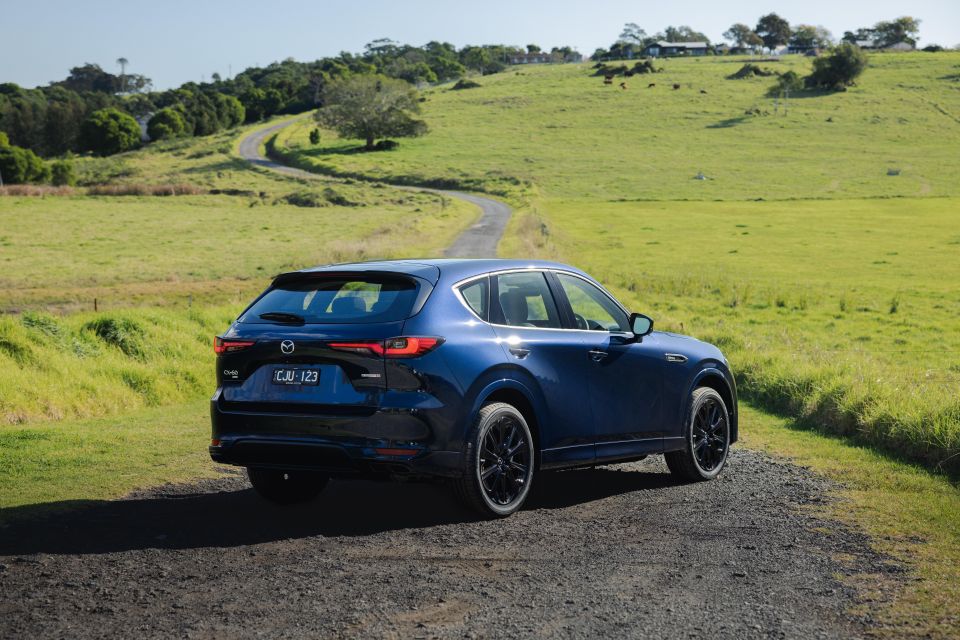

Quickly see how this car stacks up against its competition. Select any benchmark to see more details.
Where expert car reviews meet expert car buying – CarExpert gives you trusted advice, personalised service and real savings on your next new car.
Mazda is forging ahead with its ‘premium’ push, and this is the first of several new vehicles the brand plans to take on the Europeans with.

The 2023 Mazda CX-60 is the company’s first SUV based on a rear-wheel drive-biased architecture, and the first with turbocharged inline six engines.
It also offers Mazda’s first plug-in hybrid drivetrain, and aims to make the technology more mainstream in Australia, given local buyers have been more keen on conventional hybrids and electric vehicles (EVs) to date.
The company’s executives tell us the CX-60 has been 10 years in the making, and it arrives with bold claims around its levels of luxury, performance, handling and efficiency – local boss Vinesh Bhindi described it as a “technical tour de force” and a “step change for Mazda”.
Arriving in three trim levels with three drivetrains available across the range, the CX-60 is in the firing line for everything from high-grade Mazda CX-5, Kia Sportage, and Volkswagen Tiguan models, to the Audi Q5, BMW X3 and Lexus NX.

While the CX-60 may look like it’s gunning for the Germans, Mazda has pretty modest sales aspirations of around 500 units per month, telling CarExpert the new model is pitched at existing customers who are at a new stage of life and want to “step up to something” within Mazda’s own portfolio that better reflects their higher status.
Is it a flying start to the next chapter of ‘Mazda Premium’?
You can dip just under the $60,000 marker if you go for an un-optioned CX-60 G40e Evolve ($59,800), while the range tops out at a lofty $87,252 before on-roads for the P50e Azami plug-in hybrid flagship.
We’ll detail standard equipment further down, but even the entry-level grade is pretty well equipped, and it allows the CX-60 to straddle the mainstream and premium mid-size SUV segments while offering more oomph under the bonnet than just about everything this side of a Volkswagen Tiguan R – but even that only has four cylinders, not six.
To get a six-cylinder engines in the Audi Q5 or BMW X3 you need to pay over $100,000 – almost twice as much as base versions of the Mazda – while the plug-in hybrid is more affordable than the smaller Lexus NX450h+ ($90,948), and well under the BMW X3 xDrive30e ($111,800) and Volvo XC60 Recharge ($101,990).
You could also logically cross-shop high-spec G40e Azami models (from $73,000) with the Genesis GV70 3.5T AWD Sport ($83,070), which offers a 3.5-litre twin-turbo V6 and 5.1-second dash from 0-100km/h, though it still requires a $7100 Luxury Package to match the level of specification of a decked-out Mazda.
The smaller (and older) Mazda CX-5 tops out at $55,100 for the D35 Akera, with the G35 $500 less. The in-demand top-spec Toyota RAV4 Edge AWD Hybrid starts from $58,360 plus on-roads, while the Mitsubishi Outlander Plug-in Hybrid EV ranges from $56,490 to $70,990 across four trim levels with the option of three rows in higher grades – for reference the CX-60 Plug-in Hybrid is priced from $73,000 to $85,500 and is five-seat only.
MORE: 2023 Mazda CX-60 price and specs
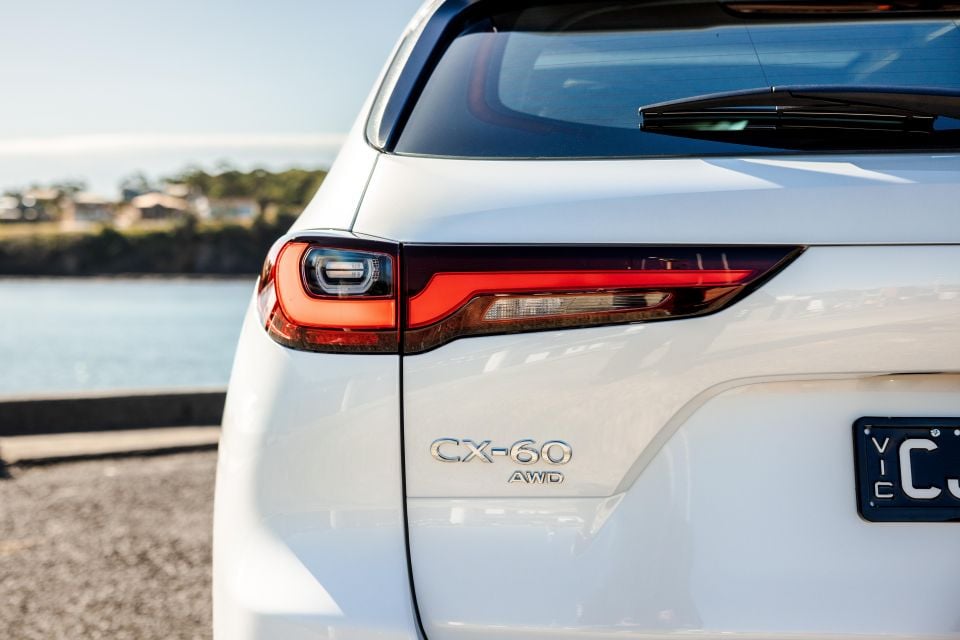
2023 Mazda CX-60 pricing:
Evolve
GT
Azami
Prices exclude on-road costs ($MLP)
Buy your new car without the stress. It's fast, simple and completely free.

Great service from Travis and team, second time I have used this business would not hesitate to recommend them to anyone
Craig C.
Purchased a Ford Ranger in Sunshine Coast, QLD
CarExpert helped Craig save thousands on his Ford Ranger, now let us save you on your next new car.
Find a dealIn the high-spec models, it’s very suave.
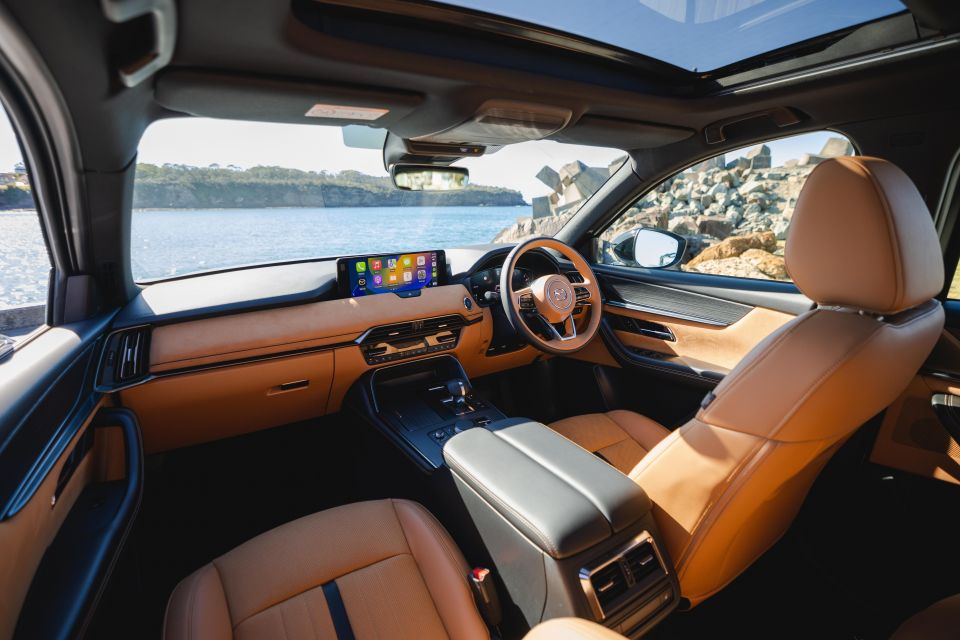
Our first stint in the CX-60 was in the top-spec Azami with SP Package, which gets the fetching tan Nappa leather interior you see above – complete with tan-coloured steering wheel.
With smooth, quilted leather elements adorning the high-contact surfaces and cool accents like wood inserts in the centre console and doors, the CX-60 definitely has an elevated ambience above other Mazdas.
As for the Evolve and GT, which come standard with lower-grade leather and a heavily grained dashboard insert that doesn’t look dissimilar to toad skin, there’s definitely a sense the CX-60 is a newer product – but it doesn’t have that special feel of a CX-8 or CX-9 Azami with their quilted Nappa interiors.
Seat comfort up front is good, with a longer base than I have experienced in other Mazdas, and a good breadth of adjustability – particularly in the GT and Azami with their fully-electric adjustment with memory for the driver.
Azami models also allow you to set up your ideal driving position using your height, and then recall those settings using the memory presents – I didn’t get a chance to try it, but you can watch Paul try it out here.
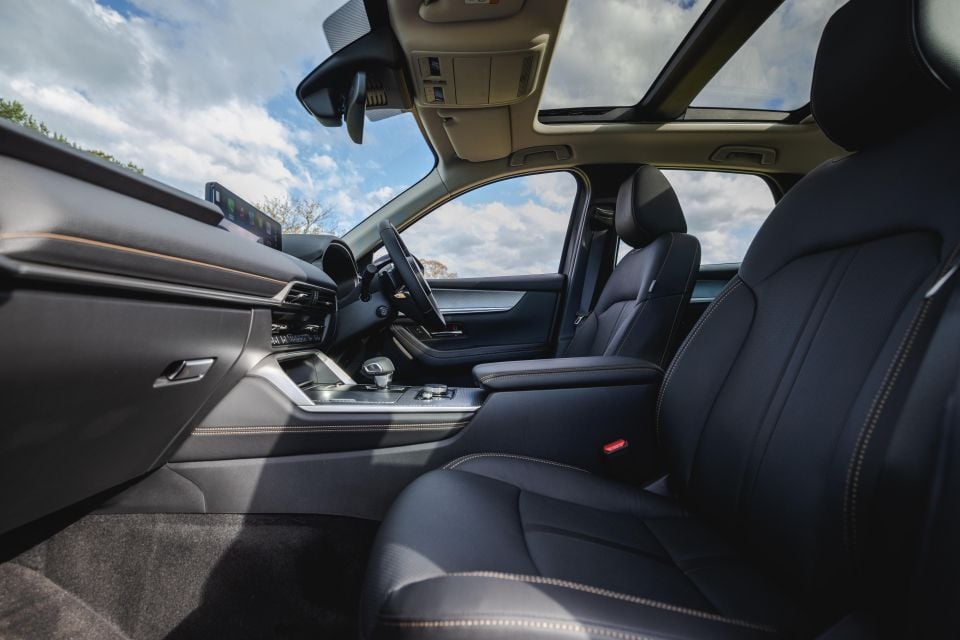
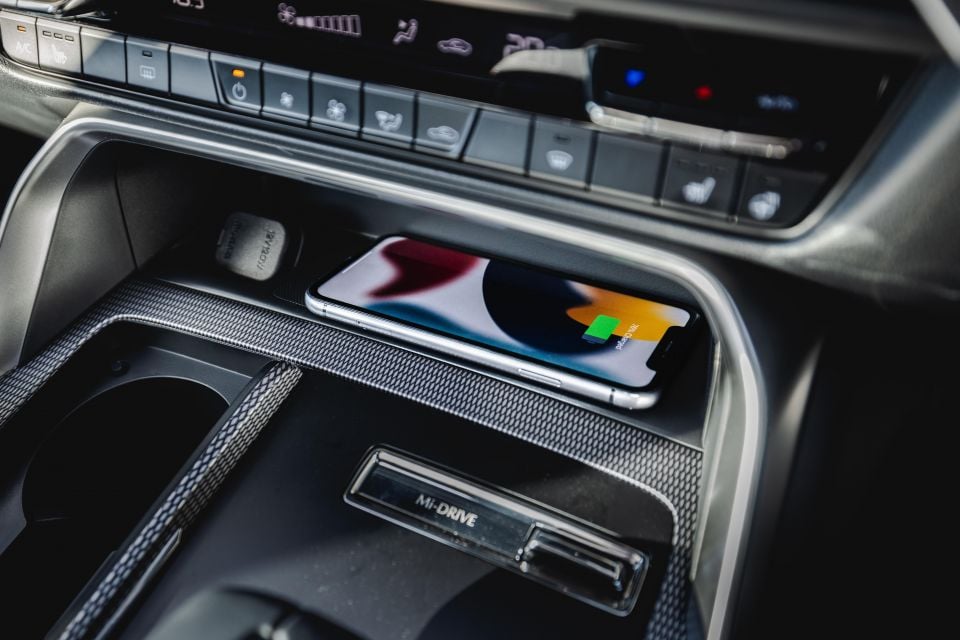
For the first time in a Mazda, the steering column is electrically adjustable from the GT and up. It’s a very Lexus touch, given the Germans don’t tend to offer it until their more high-end model lines.
Entry to the CX-60 and starting the vehicle is keyless from the base model, as are auto folding, heated and dimming mirrors. You also get an electric tailgate as standard – we’ll touch more on the boot in a bit.
A wireless smartphone charge is also included as standard across the line-up, which bolsters the standard wireless Apple CarPlay and Android Auto connectivity.
Display technology in the CX-60 is another relative strong suit, particularly in the higher grades – I’m sure you’re sensing a theme here

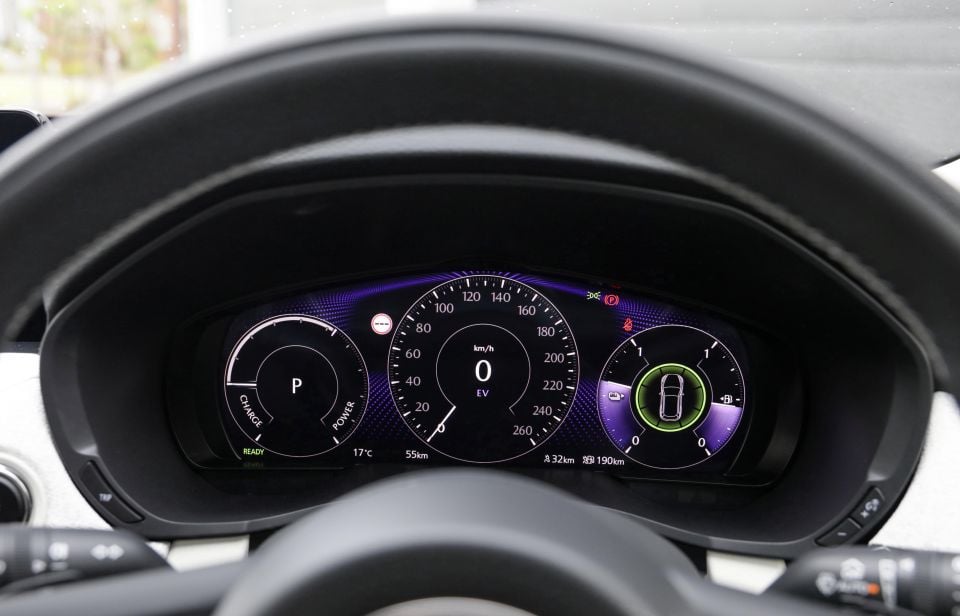
The base Evolve gets a 10.25-inch Mazda Connect system and 7.0-inch part-digital instrument cluster common with other models in the brand’s line-up such as the CX-5 and CX-8, while the GT and Azami get bumped to a new 12.3-inch digital instrument cluster and a 12.3-inch Mazda Connect infotainment display.
We only sampled the larger screen setup, and found it works well. It’s effectively the Mazda Connect system we know from other models blown up on a larger display, though the digital instrument binnacle is all-new.
There’s swish graphics with high-resolution and snappy load times, and the animations are smooth. A couple of layouts are available depending on whether you have cruise control activated or not, and switching drive modes changes up the colour theme and some of the animations.
I wish the instrument cluster had more configurability given the vast real estate, and while it’s ‘Connect’ by name, the CX-60 doesn’t offer remote and online services or a compatible smartphone app. The 12.3-inch in higher grades does, however, offer touchscreen functionality when using smartphone mirroring while stationary.
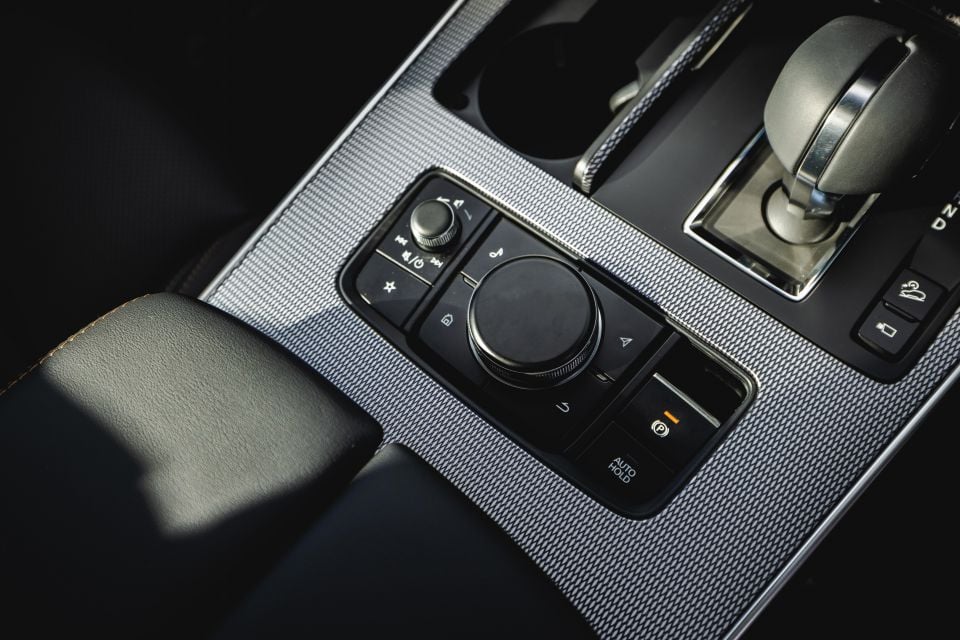
It’s otherwise controlled via the usual BMW iDrive-inspired rotary controller on the centre tunnel, surrounded by a few hard shortcut buttons and a volume knob that also allows you to skip tracks.
There are also a pair of cupholders alongside the shift-by-wire selector first seen in the MX-30, and ahead of that there’s the wireless phone charger and USB-C inputs.
Storage elsewhere up front includes decent-sized door bins and a deep cubby underneath the dual-lid centre armrest – so you can open half of it without disturbing your front passenger.
Trim inserts in the Evolve and GT are a textured metal-look, while the Azami offers a few wood-themed options. Opt for the optional Takumi Package and you get real Maple Wood inserts on the console and door trims.
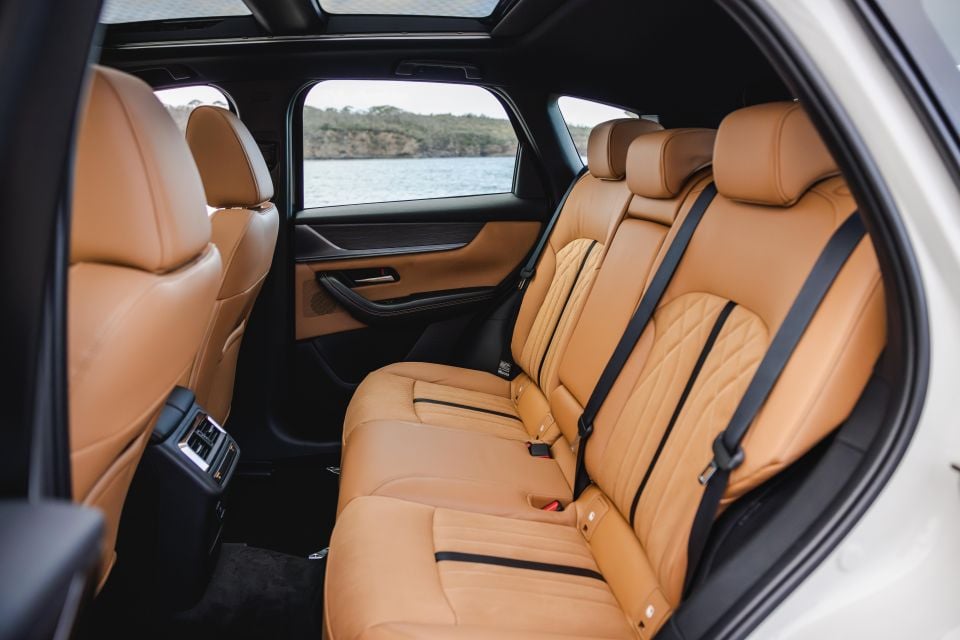
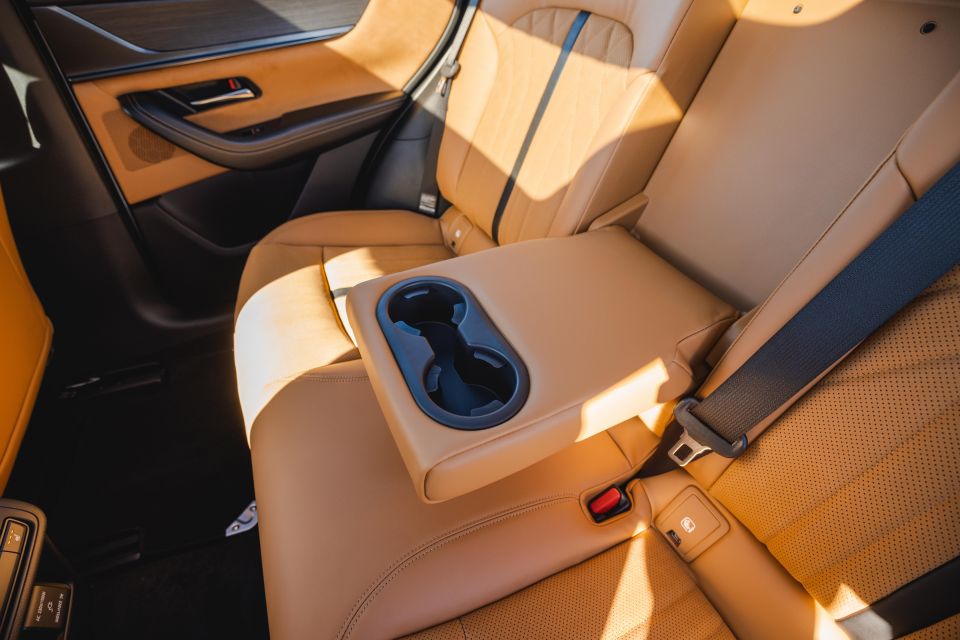

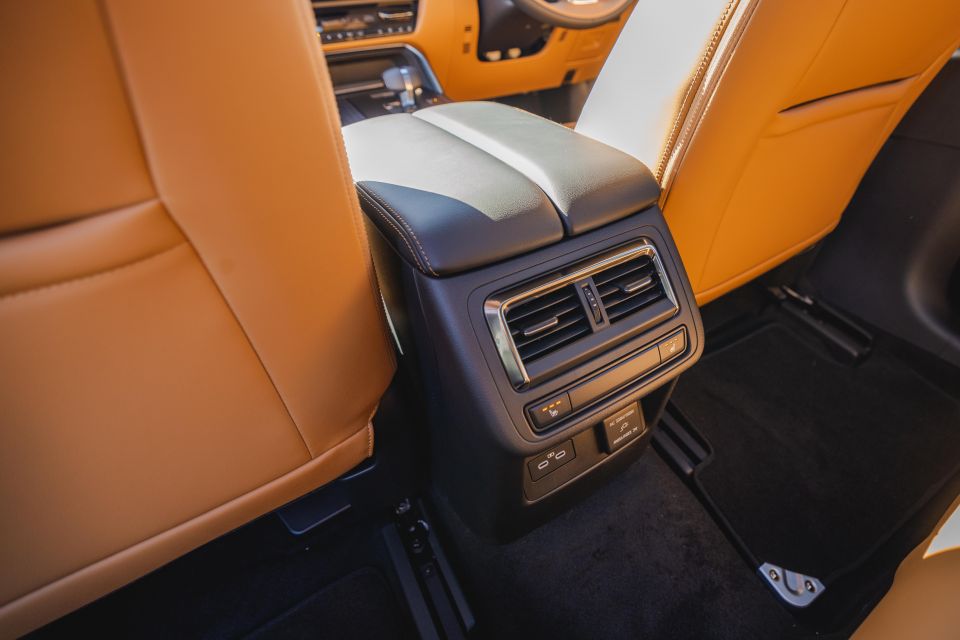
The second row isn’t massive but it’s noticeably larger than a CX-5, and is closer to something like an Audi Q5 or Mercedes-Benz GLC, if not quite BMW X3 or Volvo XC60 good.
Behind my own driving position (I’m 6’1) I had enough head-, knee- and toe room to get comfortable, with a good view out the rear windows. I’d wager two adults will be fine, though three would be a pinch. The minimal centre tunnel at least means a centre passenger isn’t too impeded in terms of foot space.
Amenities include rear air vents – though no separate climate controls – as well as USB-C and 150W AC outlets to keep devices charged. Step up to the GT and you get heated outboard seats.
There’s also a fold-down centre armrest with cupholders, map pockets behind the front seats, as well as ISOFIX anchors on the outer positions and top-tethers across all three rear seats. Bottle holders in the doors round out the notable practicality features.
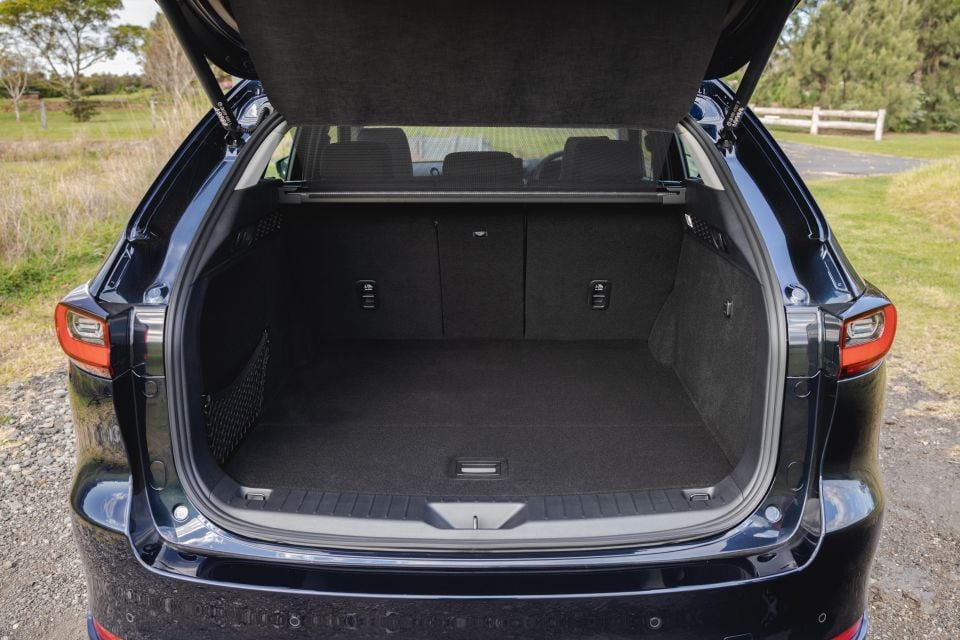
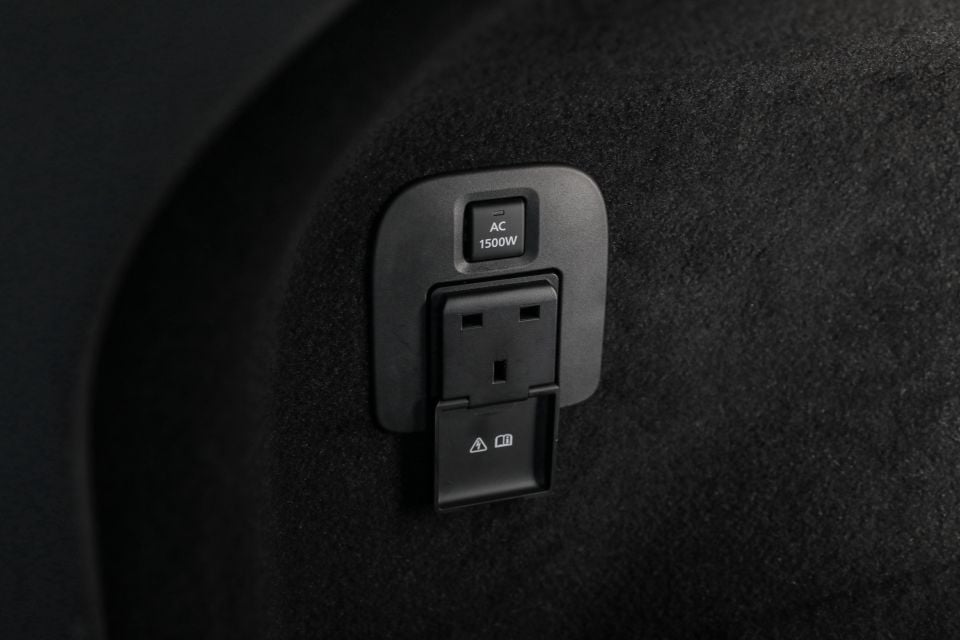

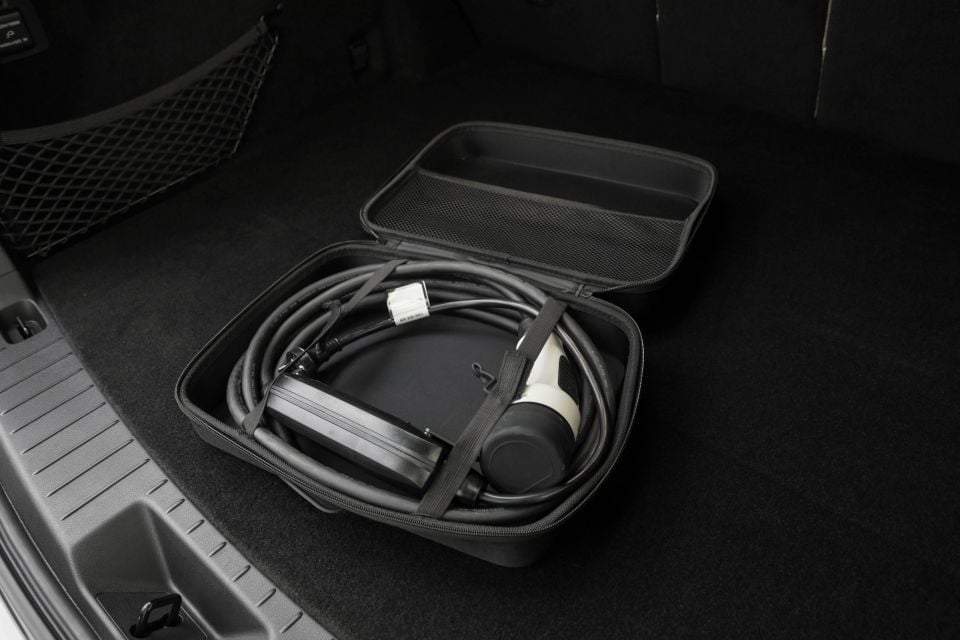
Cargo volume is quoted at 477 litres “to rear package tray” with all seats up, expanding to 1726 litres “to ceiling with underfloor storage space” with the rear seats folded.
That’s just under 40 litres better than the CX-5 with five seats in use, and nearly 400 litres better with the rear seats folded. Not bad, but somewhat off the pace of premium rivals like the Audi Q5 (520L-1520L), BMW X3 (550L-1600L) and Mercedes-Benz GLC (620L) with all seats in use.
Remote levers to drop the rear seats feature in the cargo area, and PHEV models have a 1500W AC outlet there too. Mild-hybrid versions get a space-saver spare wheel, though PHEVs get a tyre repair kit.
Three powertrains are available in Australia from launch – all of which are new for Mazda.

Opening the range is the G40e 3.3-litre turbocharged inline six petrol, which features 48V mild-hybrid technology which can shut off the combustion engine under low load and also assist under hard acceleration.
The e-Skyactiv G 3.3 develops 209kW (5000-6000rpm) and 450Nm (2000-3500rpm), and sends drive to a rear-biased all-wheel drive system as standard via an eight-speed automatic transmission.
Mazda claims the CX-60 G40e will accelerate from 0-100 in a hot hatch-like 6.9 seconds, and can run on cheaper 91 RON unleaded fuel.
Further, the company says the 3.3-litre CX-60 is nearly a second quicker to 100km/h than a CX-5 G35 Turbo, while also being as efficient as a naturally-aspirated CX-5 G25 petrol (7.4L/100km).
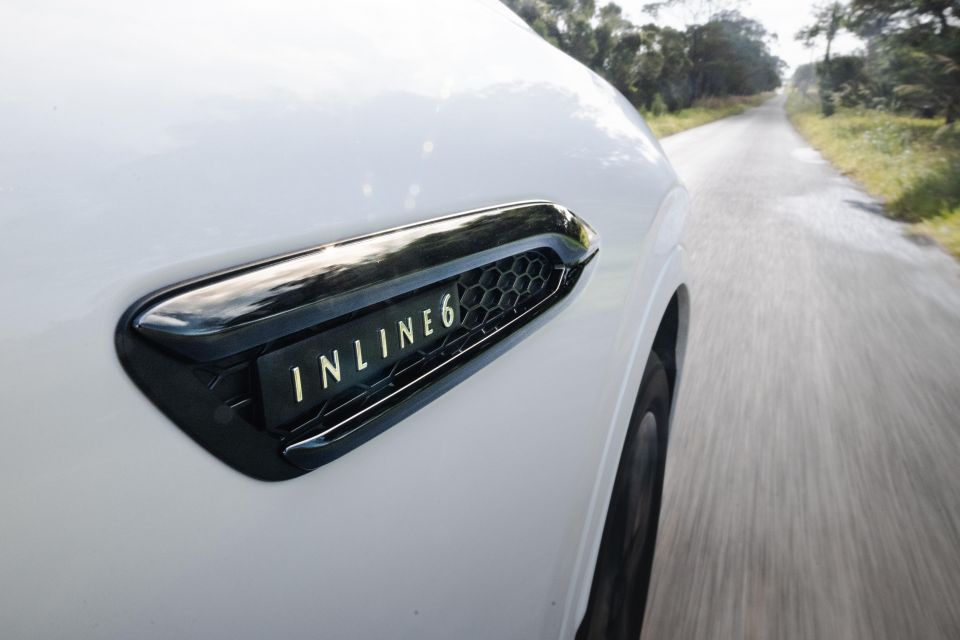
Next is the D50e 3.3-litre turbocharged inline six diesel, which again features the 48V M Hybrid Boost system.
Outputs for the oiler are 187kW (3750rpm) and 550Nm (1500-2400rpm), with rear-biased AWD standard alongside an eight-speed auto.
The e-Skyactiv D 3.3 dashes to 100km/h from rest in 7.3 seconds, with combined fuel use rated at a very thrifty 4.9L/100km – about the same as a Toyota RAV4 Hybrid.
In both MHEV versions, the 48V system comprises a 12.4kW/153Nm electric motor and a 0.33kWh lithium battery.

Finally, there’s the P50e which teams a 2.5-litre naturally-aspirated four-cylinder petrol engine with a 100kW/250Nm electric motor as well as a 17.8kWh lithium-ion battery pack. Again, an eight-speed auto is standard.
System outputs are rated at 241kW and 500Nm, while zero-emissions range is “up to 76 kilometres” in local ADR testing. According to more realistic WLTP specs in the UK, the CX-60 e-Skyactiv PHEV should be able to achieve up to 62km. Combined fuel consumption, meanwhile, is rated at a thrifty 2.1L/100km.
Mazda claims the CX-60 PHEV can dash from 0-100km/h in 5.9 seconds; it was the most powerful road-going vehicle the company has every produced until the larger CX-90 was revealed with its uprated 254kW engine.
The CX-60 Plug-in Hybrid can be charged at up to 7.2kW, which would see it replenished from 20 to 80 per cent in 90 minutes.
Unlike some rival PHEVs like the Mitsubishi Outlander PHEV and some European models, there’s no fast-charging capability via CHAdeMO or CCS DC connectors. The CX-60 only has a Type 2 port.
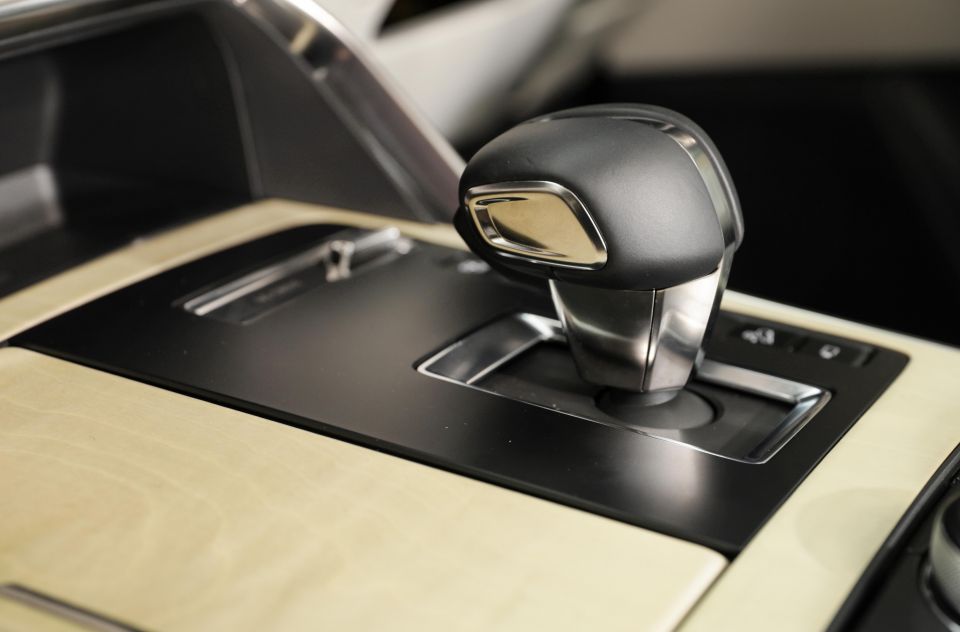
Where expert car reviews meet expert car buying – CarExpert gives you trusted advice, personalised service and real savings on your next new car.
A quick note about the new in-house eight-speed automatic. Mazda’s new transmission features a multi-plate clutch and integrated electric motor-generator in place of a hydraulic converter as an input clutch. In essence, the electric motor in both mild-hybrid and plug-in hybrid versions and mechanical clutch take place of a conventional torque converter.
Mazda claims this helps to improve fuel efficiency and improved throttle response over a conventional automatic, thanks to the fact torque outputs of the engine and electric motor are directly transmitted to the gearbox “with fast and rhythmic shifting” akin to a manual transmission.
Towing capacity is rated at up to 2500kg (G40e, P50e) or 2000kg (D50e) depending on engine variant when fitted with a Mazda Genuine Towing Kit. Maximum towball download is 150kg across the range. As for why the diesel offers less despite quoting 2500kg overseas in markets like the UK, Mazda Australia says our market’s hot climate conditions contributed to an adjusted rating for the diesel.
“As well as our very thorough testing regime, we also have different conditions [compared to Europe and the UK] with the hot weather climate. We therefore need to make sure we can pass the toughest of customer requirements under these conditions – e.g. 40-degree weather on steep inclines for sustained periods – hence the difference compared to overseas markets like the UK,” a Mazda Australia spokesperson told CarExpert.
Mazda flew in the global program manager for CX-60, Mr Kohei Shibata, to talk about the various attributes that were engineered into the new SUV during its development – it all sounded great on paper.

But while Shibata-san’s lengthy presentation spoke of a well-balanced premium SUV with refined dynamics balanced with optimised comfort for occupants, early on it was apparent Mazda has perhaps a little too hard on the dynamics… literally.
Our media launch drive started from Canberra Airport, with the route snaking through the Budawang Range to Mollymook on the NSW coast. It was mainly coarse-chip, winding high-speed country highways for this initial leg, which we spent in a CX-60 D50e Azami with SP Package.
From the passenger’s seat first up the CX-60 felt pretty swish as we left our nation’s capital, with comfortable seats in this spec finished in eye-catching tan Nappa leather, and good insulation from powertrain, road and wind noise around town – though the firm suspension transmitted just about every road imperfection.
The inline six oiler is a refined thing, with muted diesel clatter at low speeds and idle, but with a smooth and brassy note as you apply throttle. If anything, there’s a bit of BMW to how it sings as it pushes on.
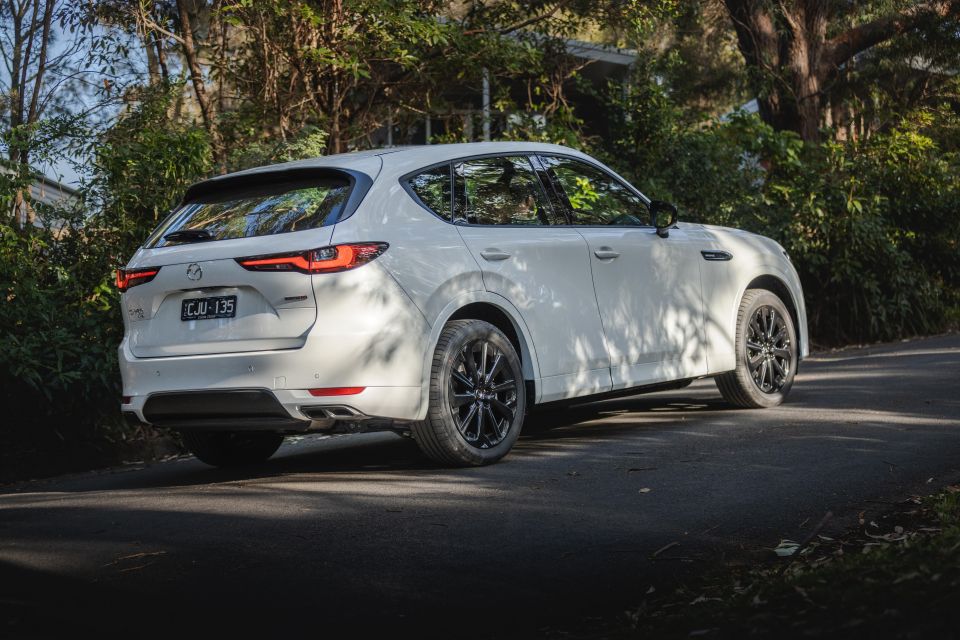
Once we started hitting the highway cabin refinement took a hit, with the coarse-chip blacktop transmitting a decent amount of tyre roar into the cabin at 100km/h. We didn’t have a competitor to test back-to-back to see if this was a particularly bad road, given how quiet the CX-60 was on the smoother stuff.
I figured the 20-inch wheels and lower-profile 235/50 Toyo Proxes Sport performance rubber may have had something to do with this, which appear to be part of the sportier SP Package as the Azami with Takumi Package I drove the following day was wearing a similar wheel design sans black paint with Bridgestone Alenza tyres – the same rubber used on more luxurious vehicles like the Volkswagen Touareg.
On the winding highways on the way to Mollymook the CX-60 settled nicely, and the sportier chassis tune translates into a hunkered-down and secure feel at high speeds. The CX-60 has a double wishbone suspension system up front and a multi-link setup at the rear. It handles sweeping bends beautifully, and there’s plenty of performance from the D50e’s muscular inline six diesel.
That rear-drive balance really comes into play here as well, giving the feeling of being pushed rather than pulled, and allowing the front wheels to prioritise steering rather than accelerating. It’s planted and secure without feeling overly focused other than the hard ride, but that plays into the more luxurious pretensions.
On the roll Mazda’s new eight-speed automatic is a snappy shifter, but in town at lower speeds shifts can be a little iffy, occasionally jerking like when you mess up a manual shift. We didn’t note any clunking, though one or two other journalists reported this trait on the drive.

The 3.3-litre turbo-diesel is well-suited to the CX-60’s size and apparent tourer personality, with 550Nm on tap from just 1500rpm through to 2400rpm making it a very relaxed and effortless driver in every day scenarios.
We were seeing fuel consumption of around 5.5-5.8 litres per 100km on the trip computer, which was mainly highway-skewed but mixed with some urban driving, as well as some more spirited sections through the mountain ranges.
The ride is firmly sprung but decently damped, meaning high-frequency imperfections can make the CX-60 feel quite busy, but the car is surprisingly pliant over sharper hits at higher speeds. It’s an odd combination, and out of character given Mazda’s usually beautifully balanced chassis tunes.
The steering is on the lighter side and a little lacking in feel for the more dynamic stretches of roads we traversed, occasionally requiring more lock than initially expected. It gives the CX-60 more of a big-car, grand tourer feel as opposed to the keener feel of something like a BMW X3.
Personally, I find the smaller CX-30 strikes a better balance between comfort, accuracy and feedback, but by no means does the CX-60 feel vague or boaty at the front end. Our later drive of the G40e petrol revealed the base powertrain variant as the keenest performer and steerer.

The PHEV is roughly 150kg heavier than the equivalent D50e diesel and 190kg heftier than the G40e petrol, and you can definitely feel the extra heft in the corners as well as in how the car settles over bumps.
While easily the quickest variant, the PHEV is the least dynamic of the trio. It feels more unsettled over pockmarked roads in town – some of Mollymook’s streets were particularly bad – and it takes a tad longer to settle over larger hits or undulations at higher speeds.
Refinement of the drivetrain was another slight knock on the CX-60, with the petrol engine occasionally firing to life in a gruff manner, and the transmission at times feeling elastic off the line when in EV mode in particular.
You should be able to achieve 60-65km of EV driving range without much effort in the CX-60 PHEV, with energy consumption settling into the low- to mid-20kWh/100km bracket. We saw fuel use hover between 2.0-3.0L/100km despite using Sport mode for the spirited sections which keeps both power sources primed for maximum go.
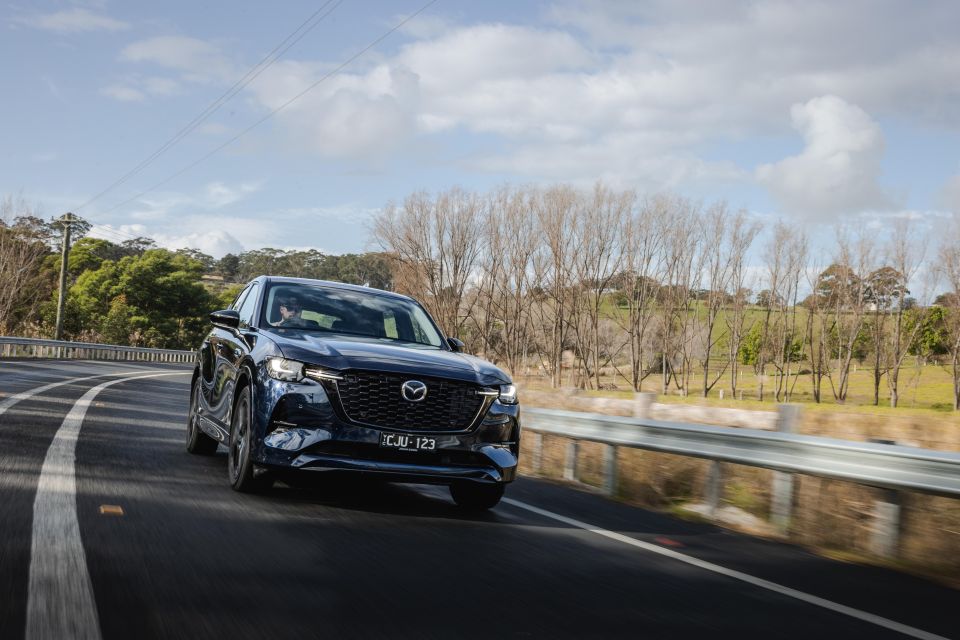
The P50e lacks the silky-smooth engine note of the sixes, with a gravelly note that doesn’t sound like the brand’s other four-cylinder products. Mazda made a point of saying it focused on the acoustics and notes of the powertrains for better engagement, and the electric motor has a supercharger-like whine when in use. It’s quite characterful, if not as refined as the other two options.
I drove the P50e GT which like the Azami SP has the sportier tyres, so there was a bit of tyre roar on the coarse road surfaces that adorned pretty much every stretch of tarmac I covered on the test loop.
Finally, we drove the G40e in Azami SP specification the following morning from Mollymook to Moruya Airport, which again saw us cover similar roads to the first drive leg in the D50e.
The 3.3-litre inline six petrol surprisingly was my pick of the bunch, with linear acceleration and sharp throttle response, a sexy engine note, as well as a more lithe feel at the front end lending more to Mazda’s zoom zoom mantra.
It feels quicker than the 6.9s 0-100 claim might suggest, and was surprisingly efficient despite us being fairly liberal with the throttle through some twistier high-speed sections.
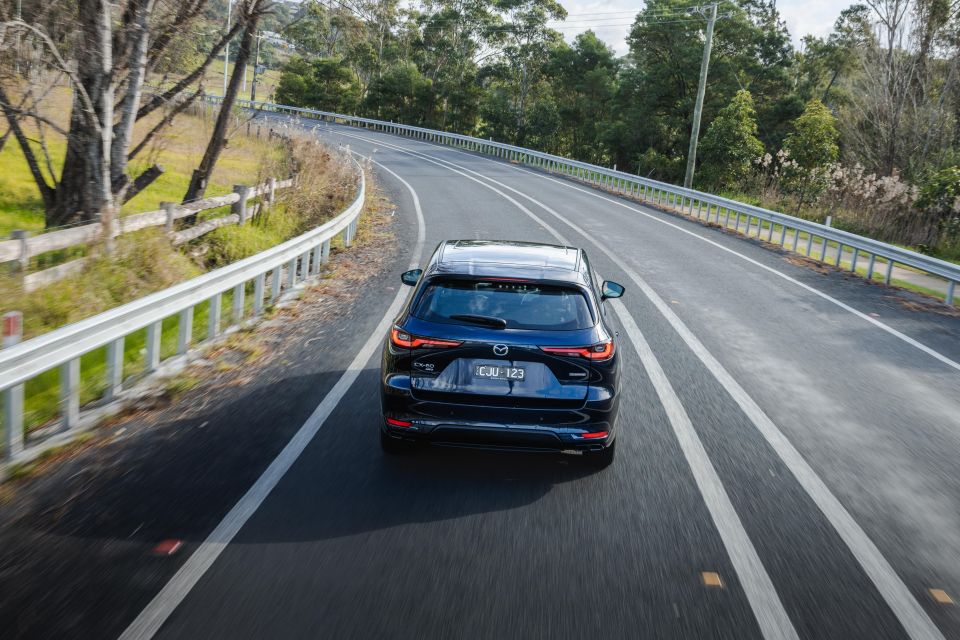
All versions of the CX-60 come with an array of driver assistance systems as you’d expect, but the GT and Azami specifications we drove (an Evolve was on fleet but we didn’t get a chance to drive it) were decked out with everything Mazda could possibly throw at it.
Adaptive cruise control with Cruising & Traffic Support offers semi-autonomous capability on the highway and in traffic, and as we’ve come to expect from Mazda it works smoothly and intuitively.
The lane centring function worked well, and activating the cruise control switches the layout of the cluster to show an assistance system menu front and centre with the dials spread to each side. I wish you could go back to the normal look.
Blind-spot assist will actively steer you back into your lane to avoid a collision with an approaching vehicle, and there’s front and rear cross-traffic alert to help when entering intersections or reversing out of blind parking spots. Even better, there’s Turn-across Traffic Assist in the AEB system to stop you if you attempt an unsafe turn into oncoming traffic.
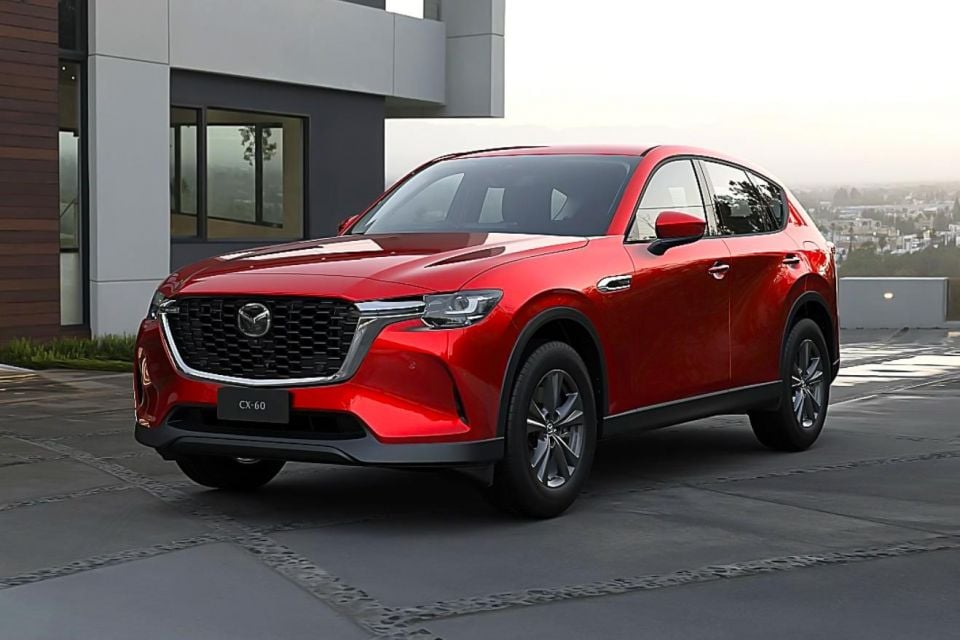
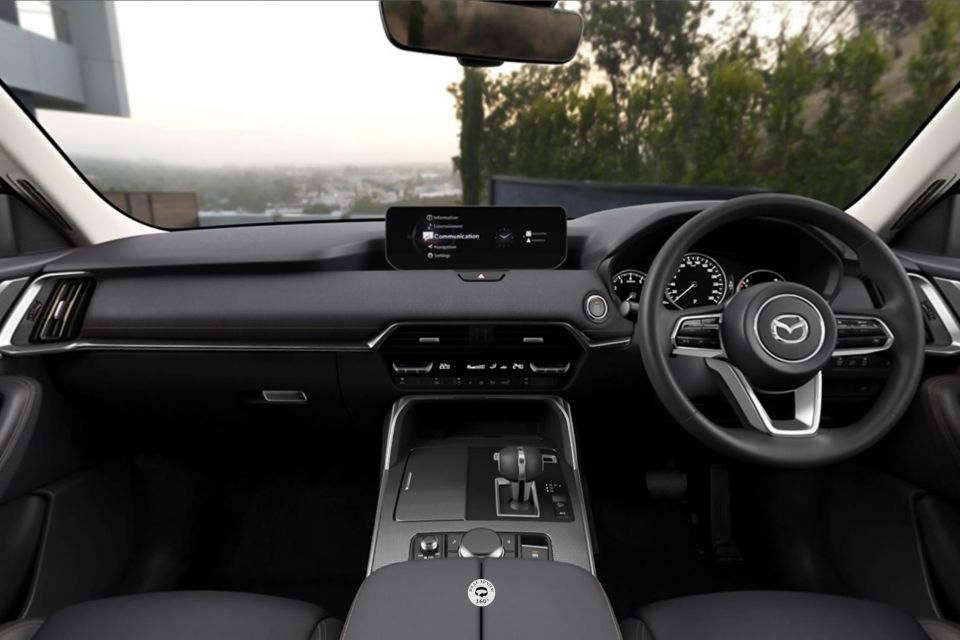
CX-60 Evolve highlights:
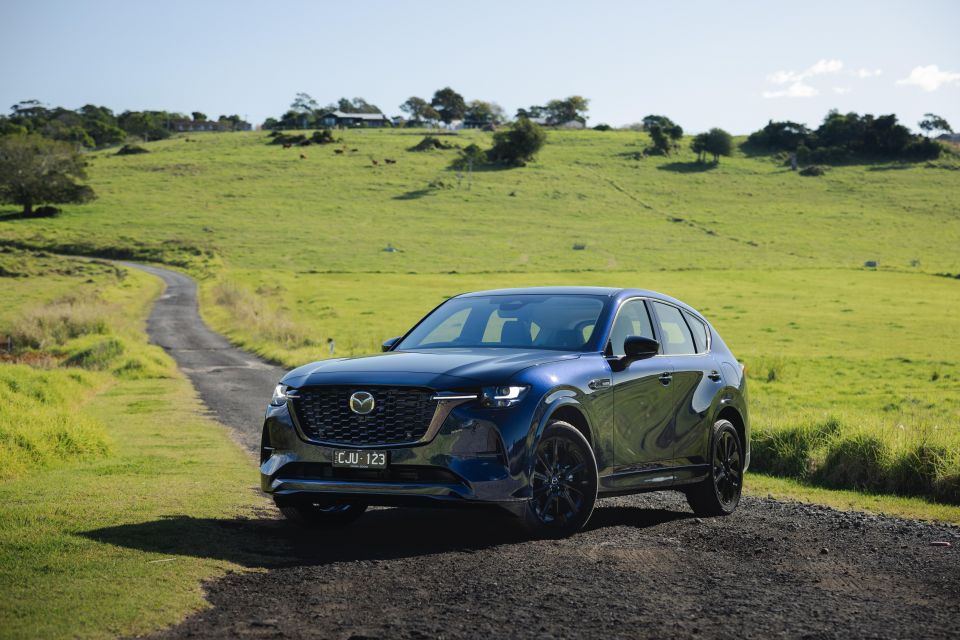
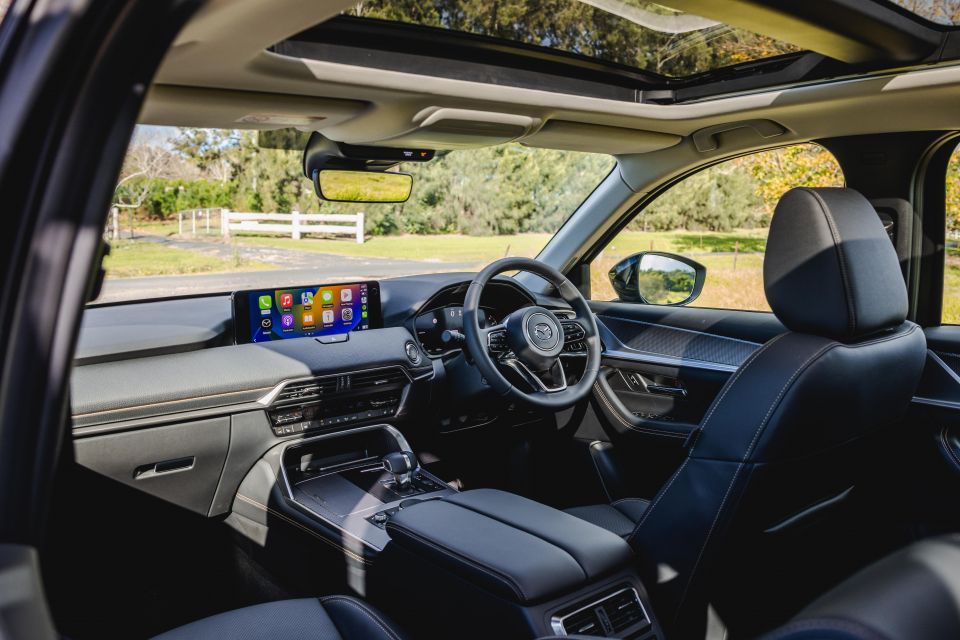

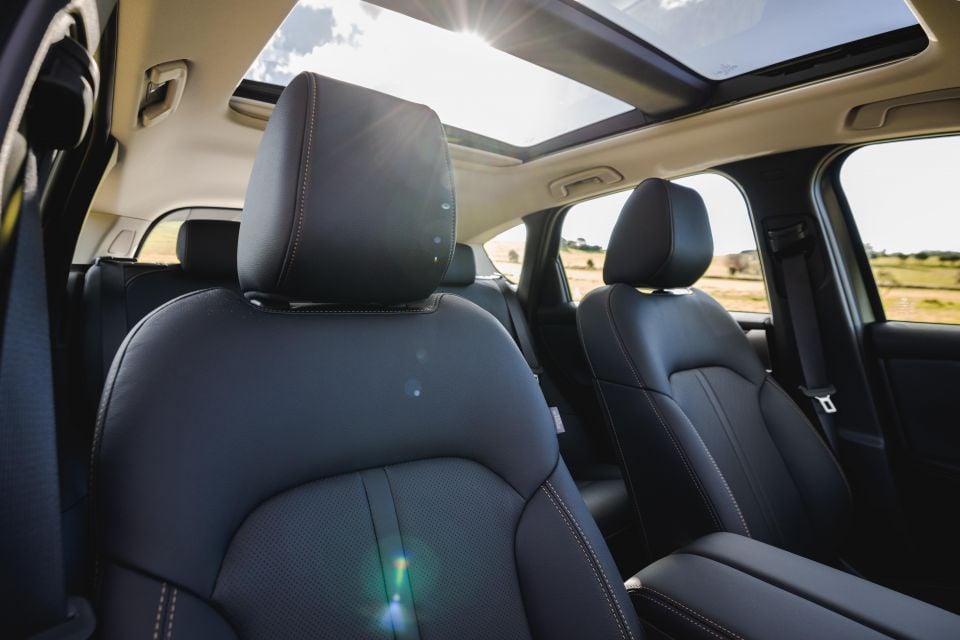
CX-60 GT adds:
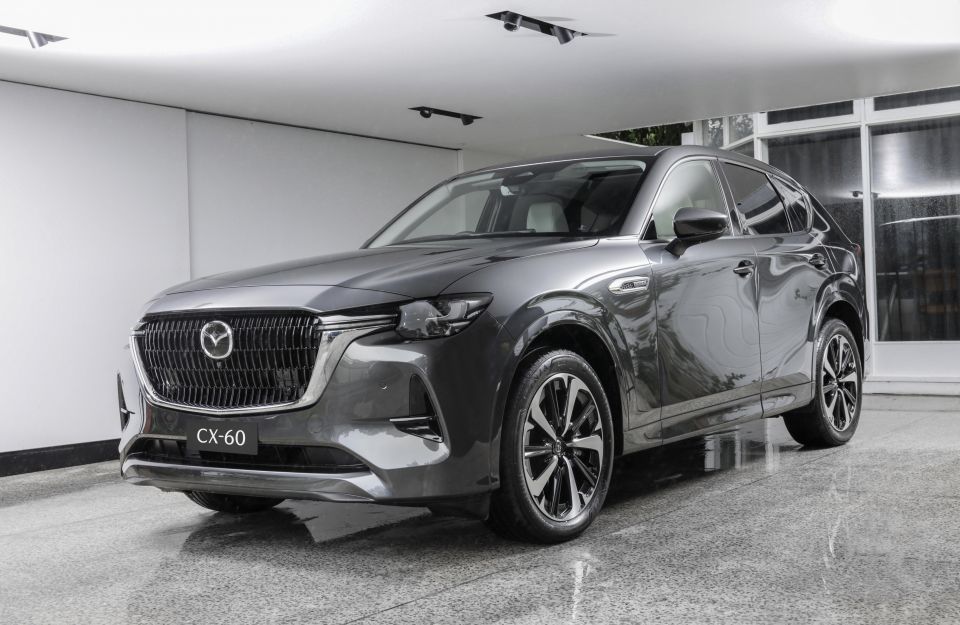
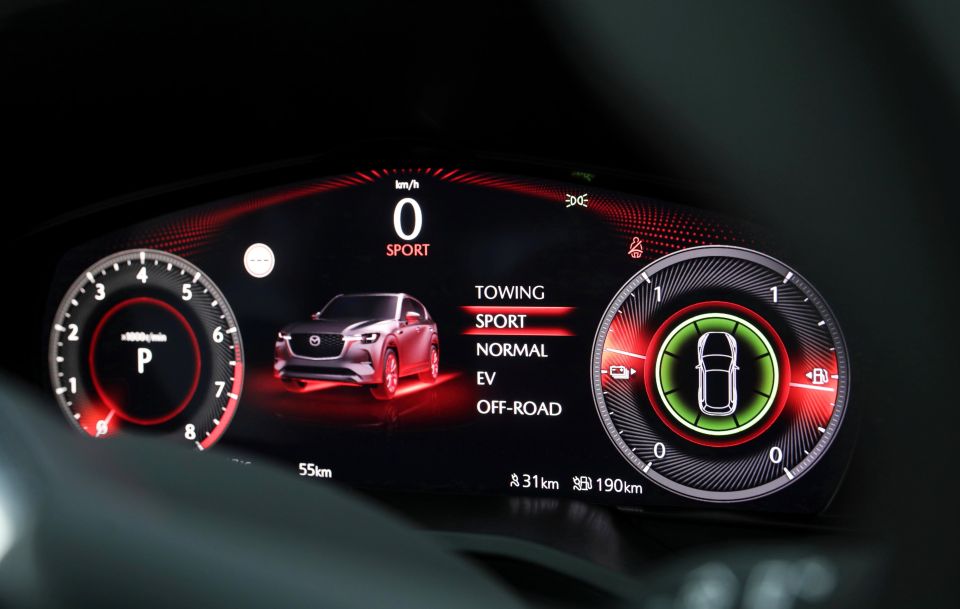
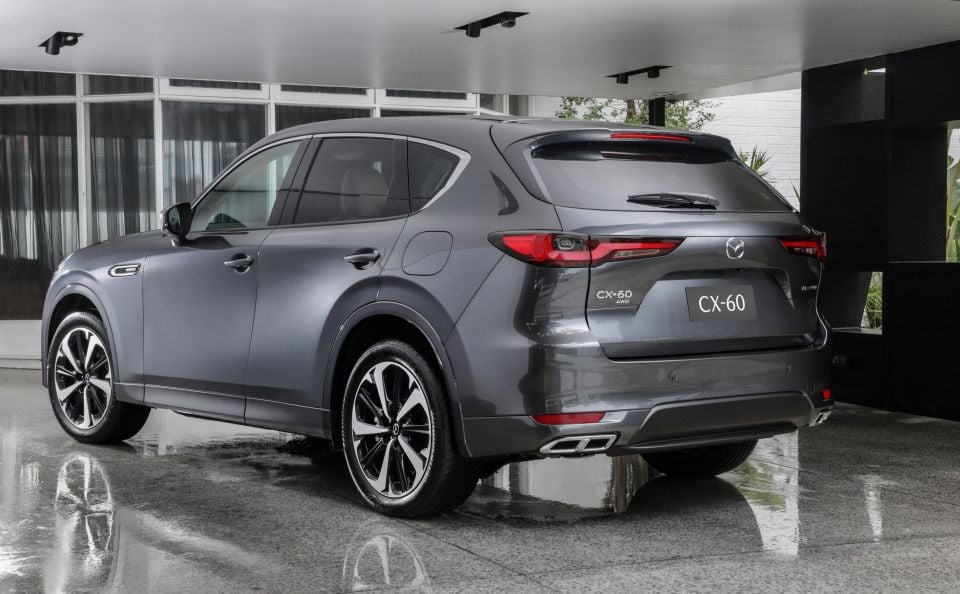

CX-60 Azami adds:

Vision Technology Package: $2000 (Evolve, GT)
Luxury Package: $4000 (Evolve)

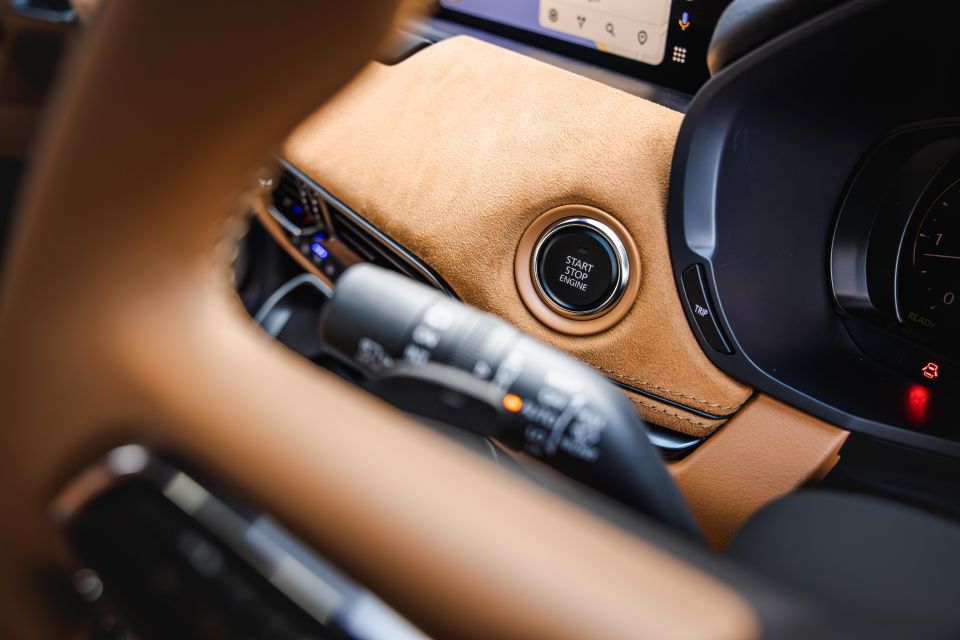
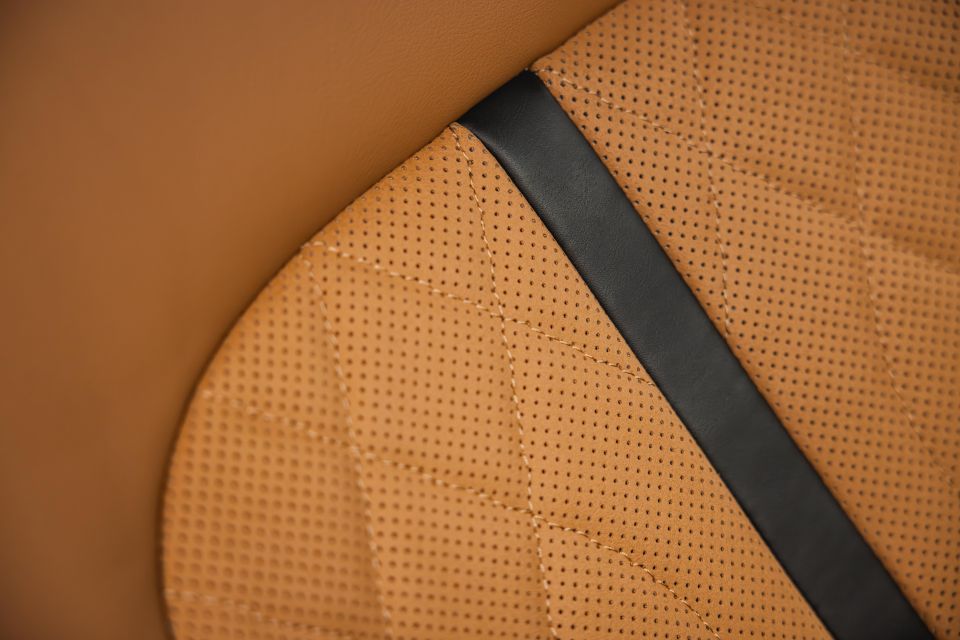
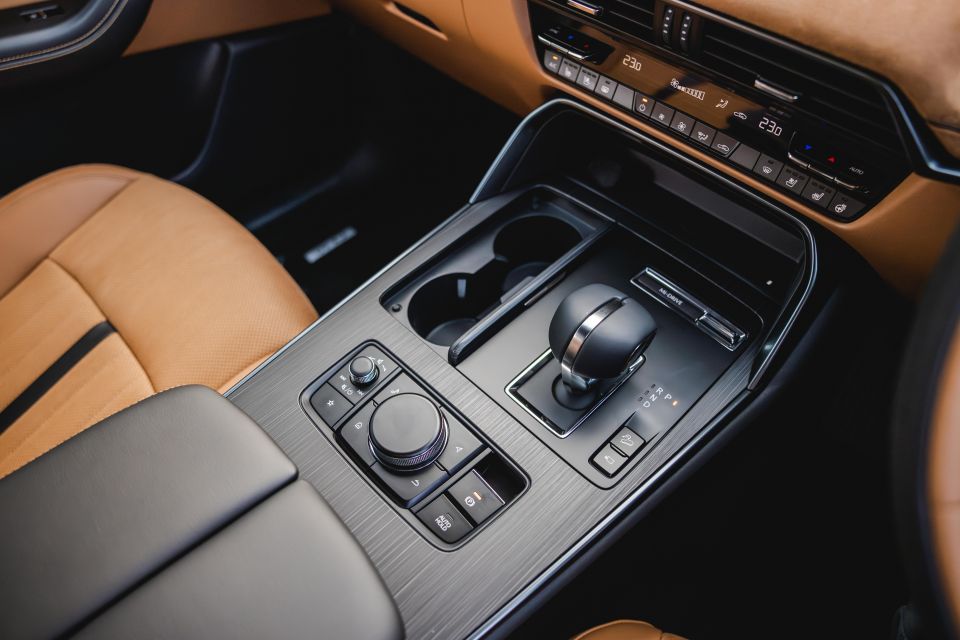
SP Package: $2000 (Azami)
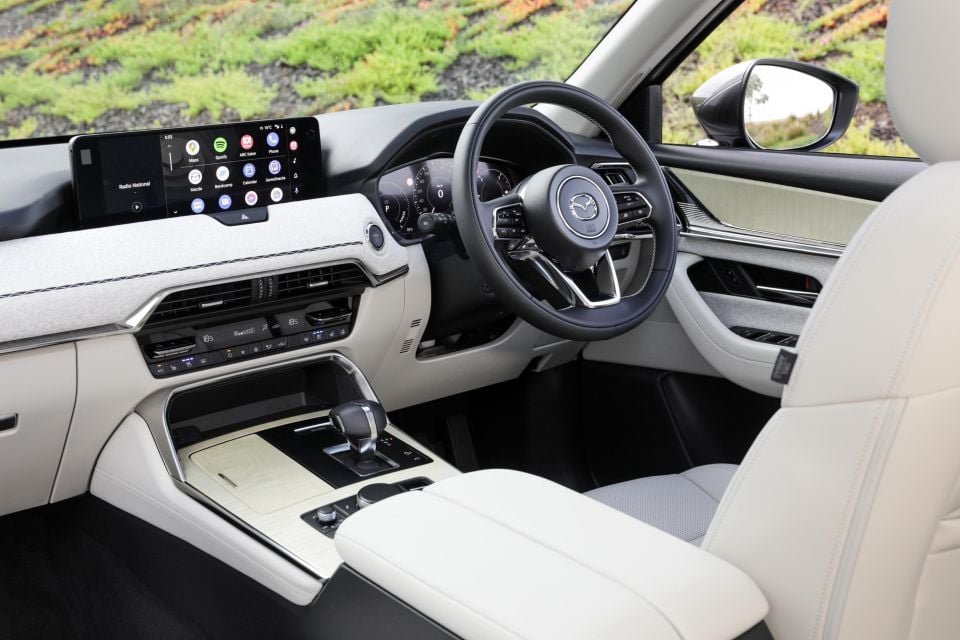
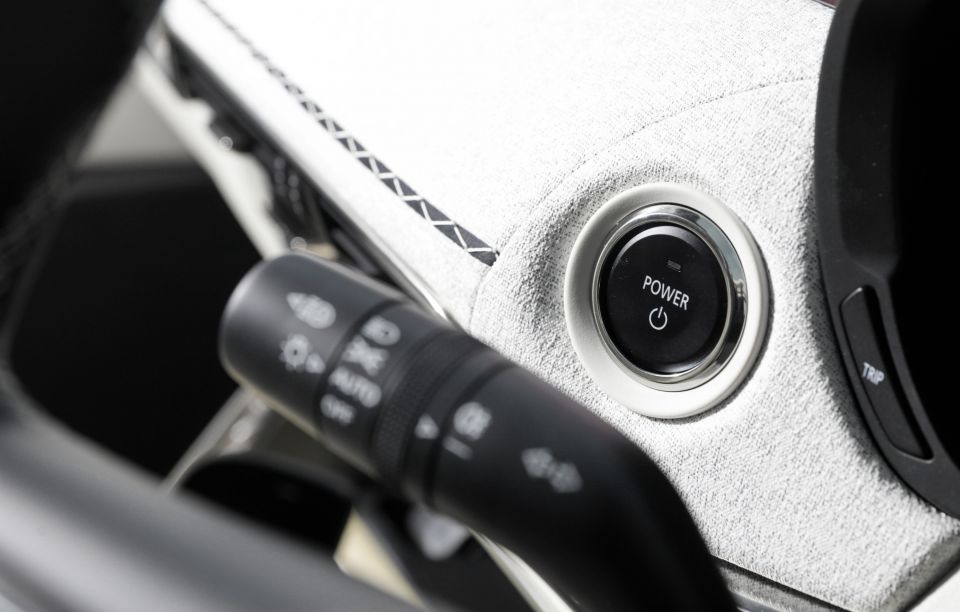

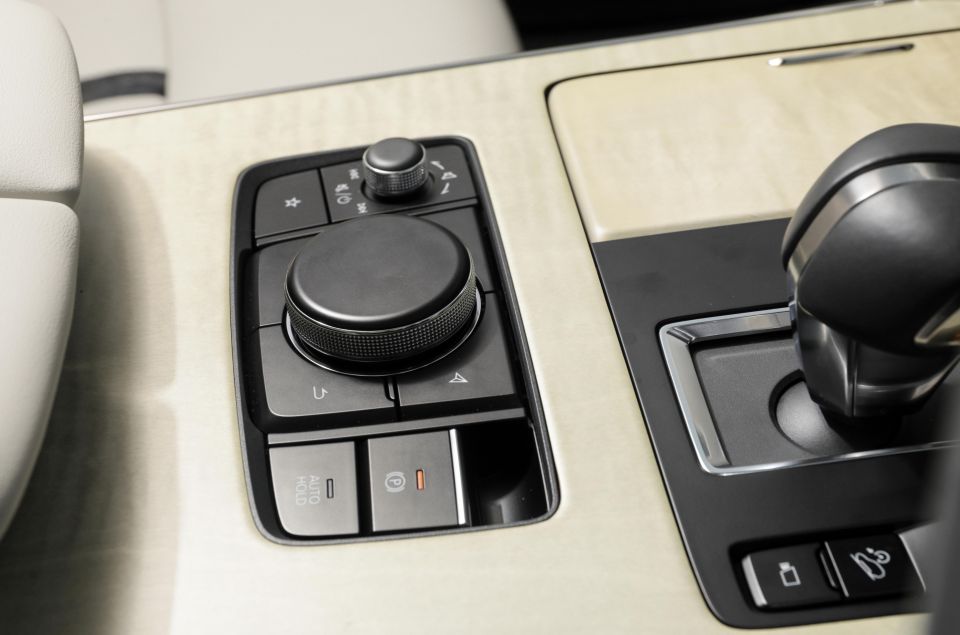
Takumi Package: $2000 (Azami)
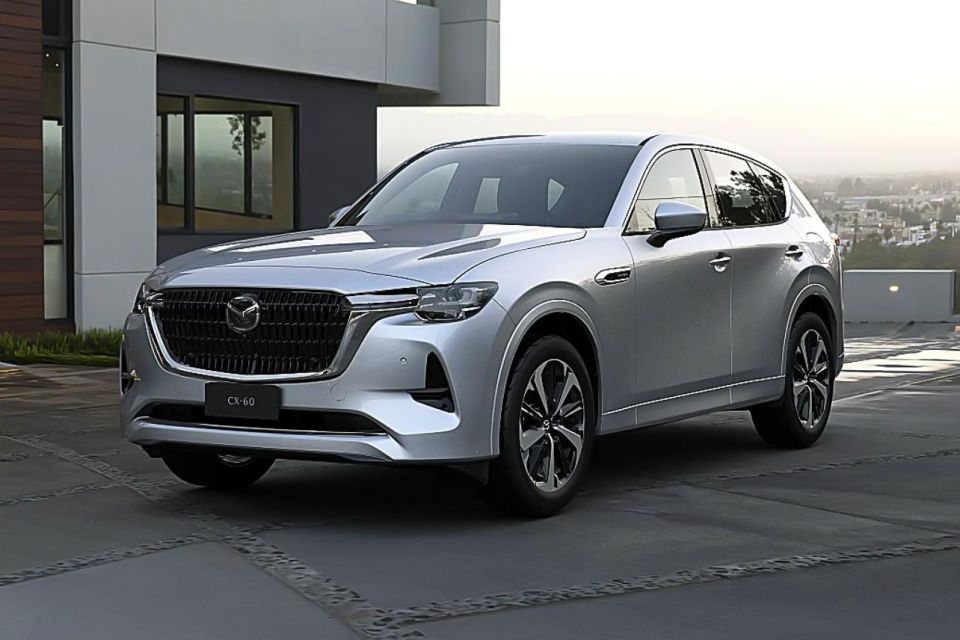
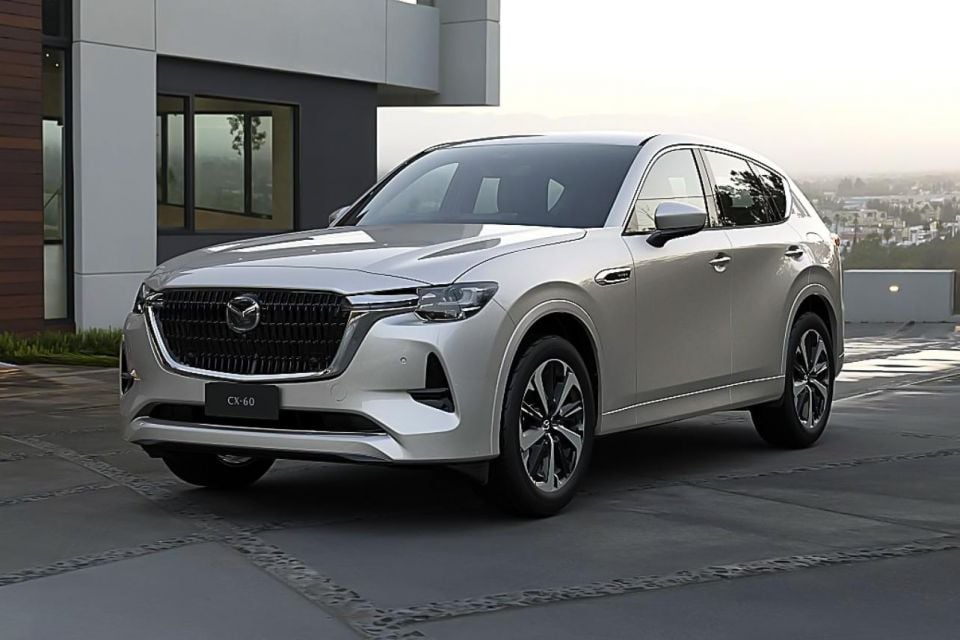
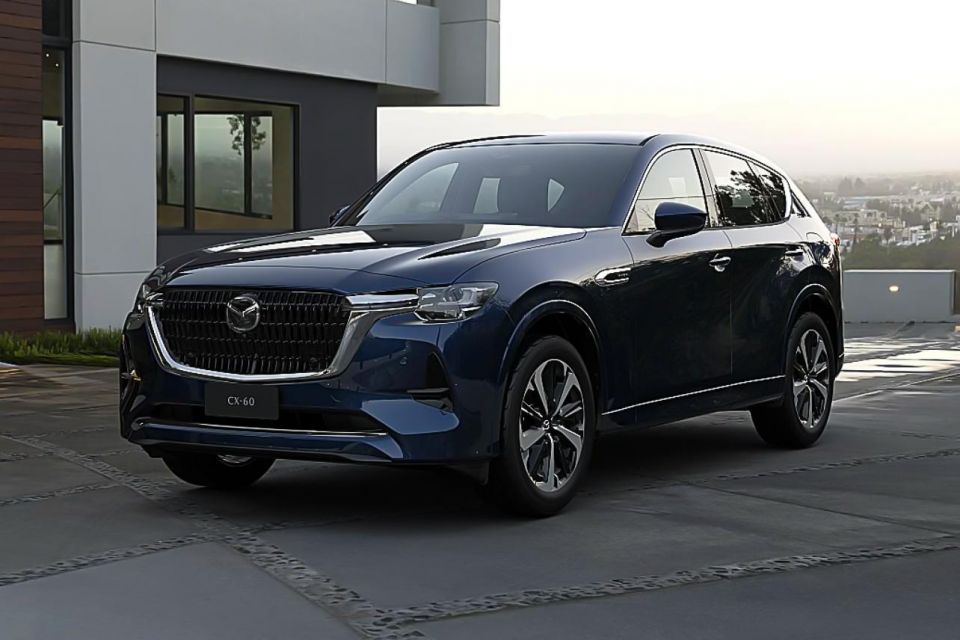
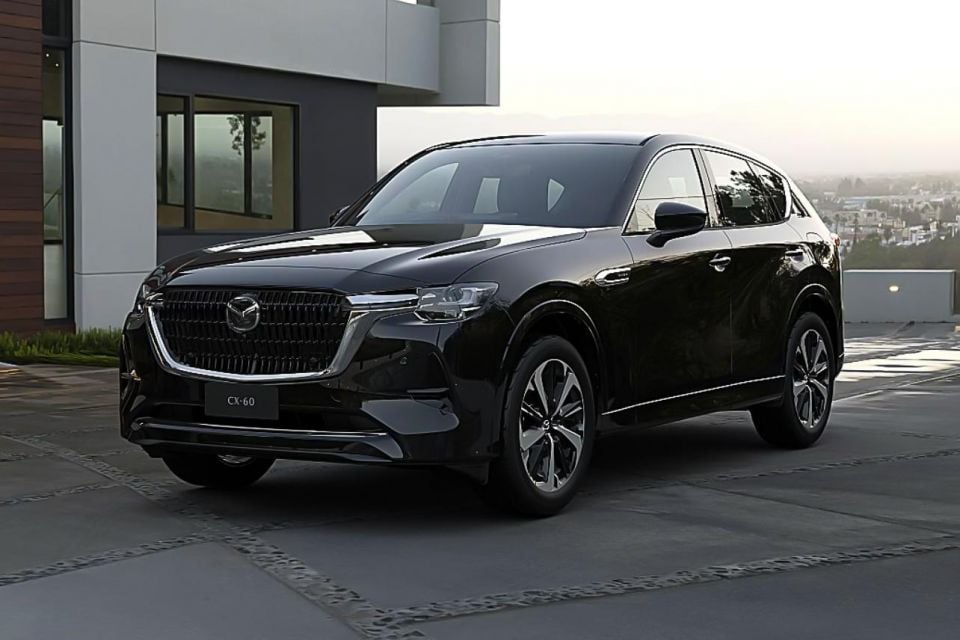

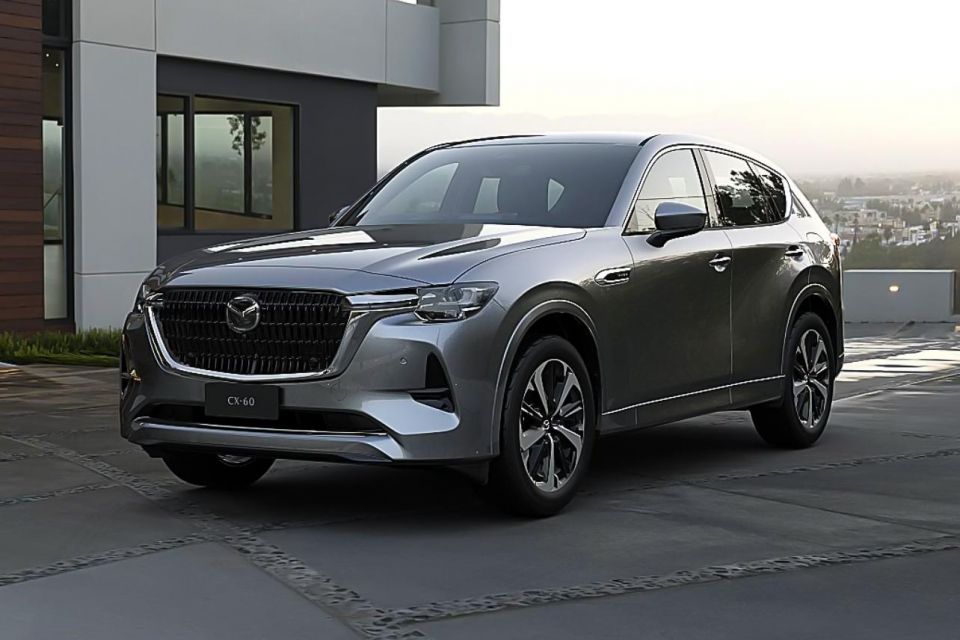
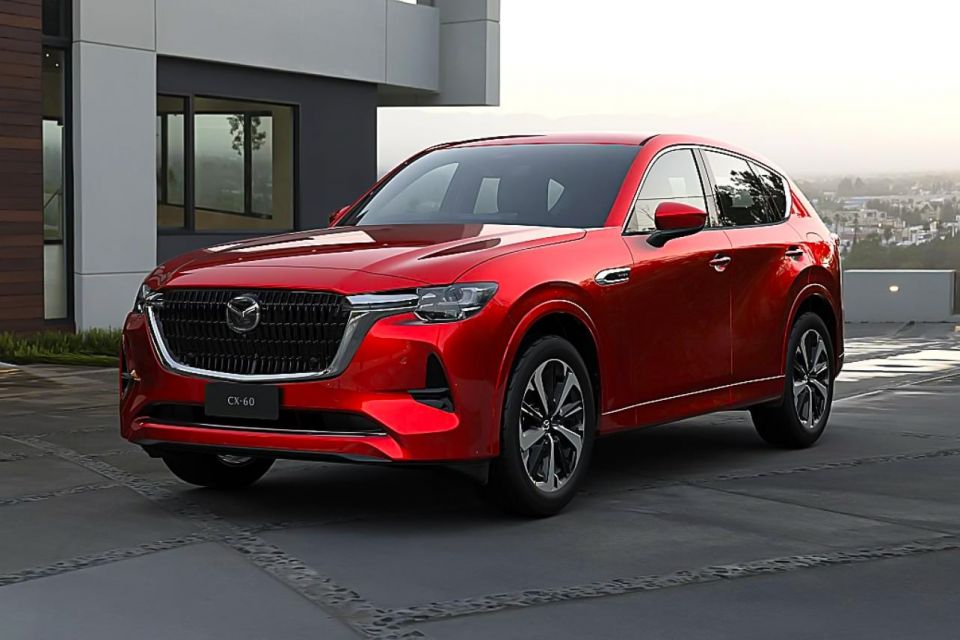
Standard: $NCO
Premium: $995
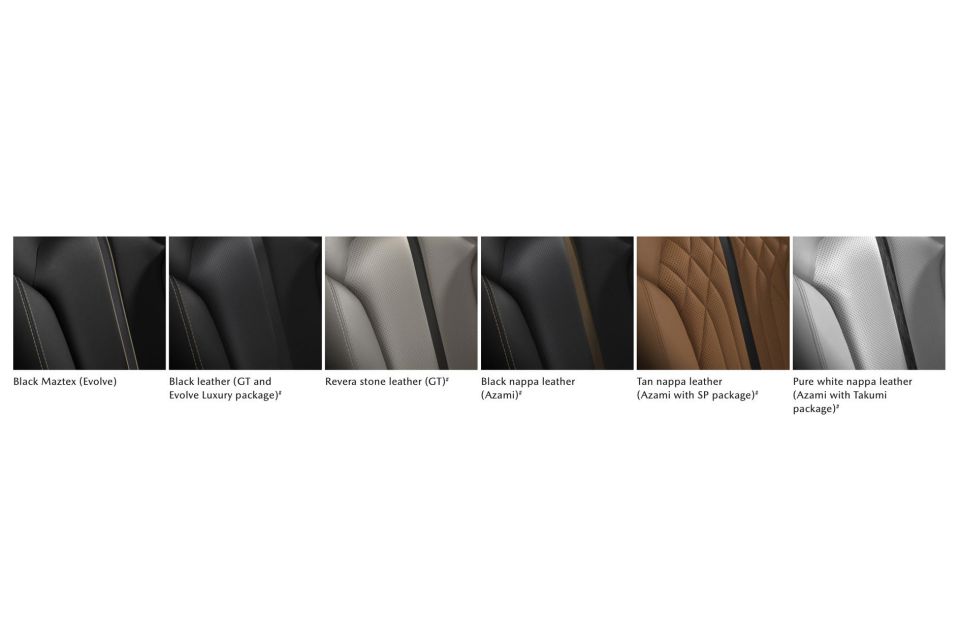
Upholsteries:
The CX-60 wears a five-star ANCAP safety rating based on tests conducted by Euro NCAP in 2022.

Covering all petrol, diesel and plug-in hybrid (PHEV) variants, the Mazda CX-60 was tested against the safety authority’s 2020-2022 criteria by sister organisation Euro NCAP.
It scored 91 per cent for adult occupant protection, 93 per cent for adult occupant protection, 89 per cent for vulnerable road user protection and 77 per cent for safety assist.
ANCAP noted high scores for all forward-moving AEB tests, side impact protection as well as the effectiveness of the CX-60’s standard front-centre airbag. While the vehicle’s performance across most tests was good, ANCAP did note a couple of penalties for emergency lane keeping as well as protection of the driver’s chest and legs in the frontal offset test.
“The lane support system fitted to the Mazda CX-60 showed some areas of Good performance, although performance in the more advanced emergency lane keeping (ELK) scenarios was assessed as Marginal,” ANCAP said in its media release.
“In the frontal offset (MPDB) test, Good results were seen for the front passenger, however Adequate and Marginal performance was recorded for the chest and legs of the driver in this test scenario with penalties applied for potential knee injury risk for occupants of different sizes/statures, and incorrect knee airbag deployment.”
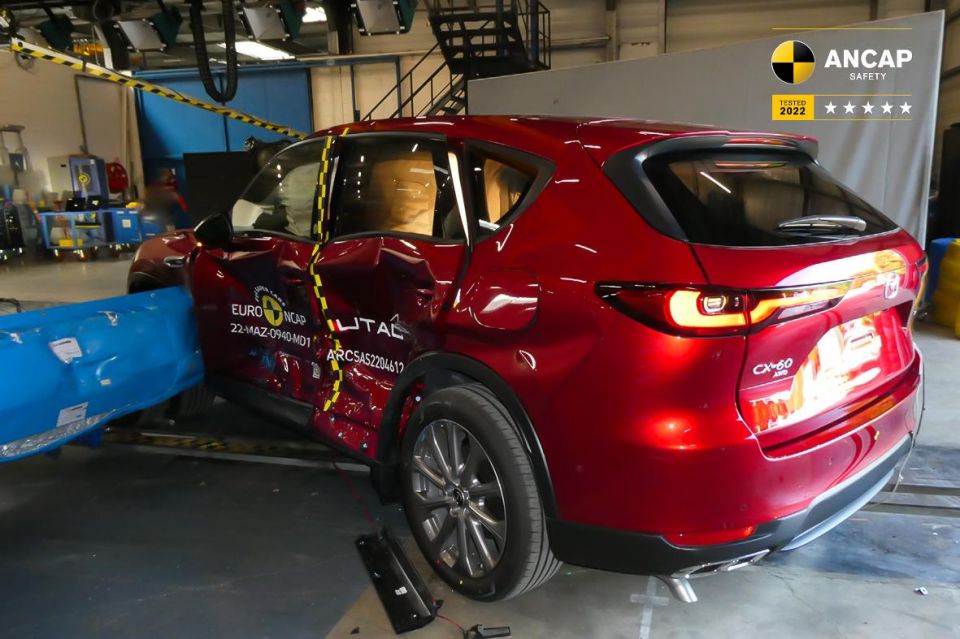
Standard safety features include:
CX-60 Azami adds:
The Azami’s additional safety equipment can be optioned in both the Evolve and GT grades through the Vision Technology Package.
Like the wider Mazda range, the CX-60 is covered by a five-year, unlimited-kilometre warranty. The high-voltage battery in the PHEV models is also covered by an eight-year factory warranty like the MX-30 Electric.
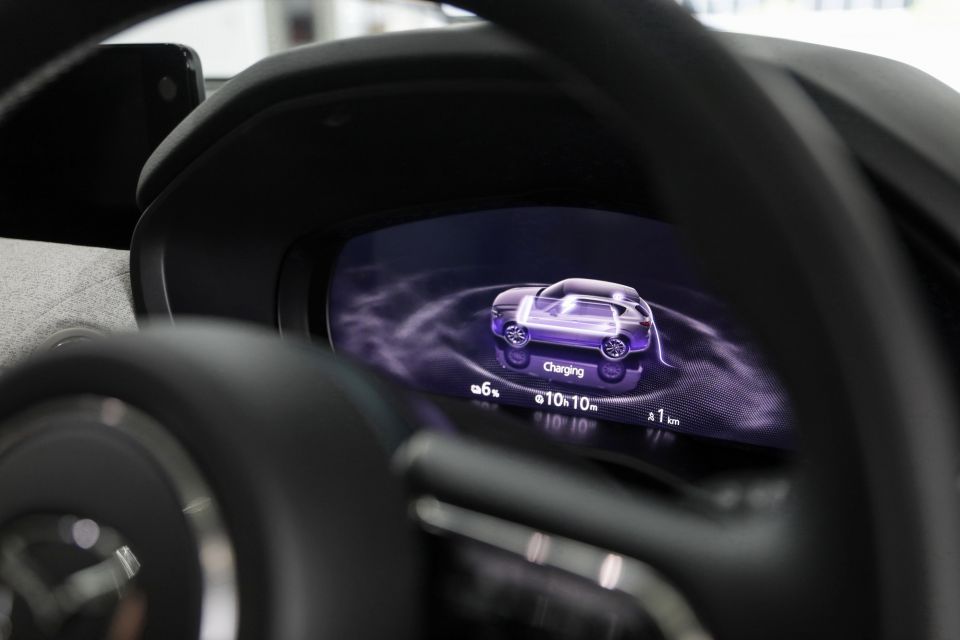
Scheduled servicing is required every 12 months or 15,000 kilometres (whichever comes first) for the G40e M Hybrid and the P50e Plug-in Hybrid, while the D50e M Hybrid quotes shorter 10,000km intervals. Pricing is on the higher side for mainstream brands, and is more expensive than the likes of BMW and Genesis.
Mazda CX-60 service pricing:
| Engine Variant | 1st Service | 2nd Service | 3rd Service | 4th Service | 5th Service |
|---|---|---|---|---|---|
| P40e 3.3L i6 MHEV | $447 | $654 | $568 | $749 | $463 |
| D50e 3.3L i6 MHEV | $478 | $643 | $975 | $643 | $478 |
| P50e 2.5L i4 PHEV | $478 | $643 | $975 | $643 | $478 |
As noted earlier we were able to get within reach of Mazda’s claimed fuel consumption figures for the G40e and D50e variants, meaning in the diesel you could get around 1000km between fills from the 58-litre fuel tank fitted to MHEV models.
Meanwhile, the PHEV has a smaller 50-litre tank. How far it gets you depends on how regularly you drive it and the conditions.
The e-Skyactiv G 3.3 (P40e) can run on cheaper 91 RON unleaded, while the e-Skyactiv PHEV (P50e) requires 95 RON premium unleaded. The e-Skyactiv D 3.3 (D50e) takes, well, diesel.
I’ve come away not quite as thrilled as I thought I’d be with the CX-60.
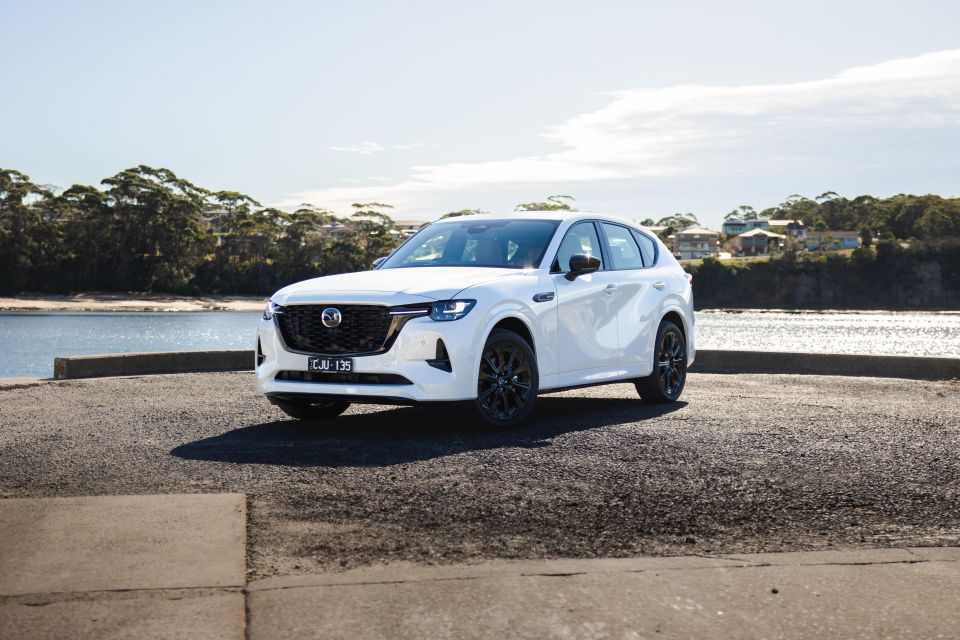
The ride was a real sticking point, and the fact the flashy interior is reserved for the flagship Azami means you have to spend big for the CX-60 to feel properly premium over a CX-5 Akera.
Road noise could be better suppressed, while the steering feel and transmission refinement at lower speeds aren’t up to the high standards we’ve come to expect from the Japanese brand.
That’s not to say this isn’t a good car. The CX-60’s inline six engine options are excellent, and put the new Mazda in a class of its own for the price.
It’s a pretty good highway tourer, and is best suited to longer road trips at higher speeds. The vast array of trim levels and option packages mean there should be a CX-60 for everyone, and there’s a solid level of spec right from the base level.
The availability of a plug-in hybrid across multiple grades is another point of difference, and its real-world range is competitive, if not quite standout.
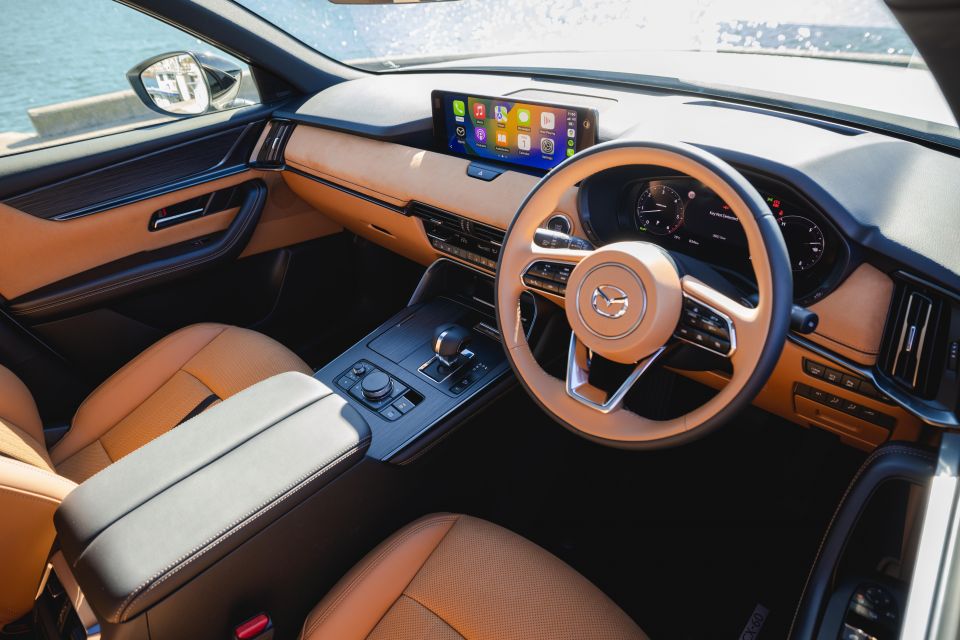
Take it for a test drive first on road conditions you frequent to see if the ride quality works for you – I’m keen to do this closer to home given the state of the roads we drove on.
As for which version is our pick, the GT offers the best balance of value and features particularly if you add the Vision Technology Package.
The base Evolve, however, is a lot of car for the money if a little austere with its more basic greyscale interior trimmings.
The Azami feels quite special with the optional SP or Takumi Packages, but is getting quite up there in price especially if you opt for the PHEV – $94,000 drive-away in Victoria is quite a bit of cash!
While the ‘First-Ever’ Mazda CX-60 may not be the home run I might have hoped; the inline six petrol and diesel engines are sweethearts that deserve a look.
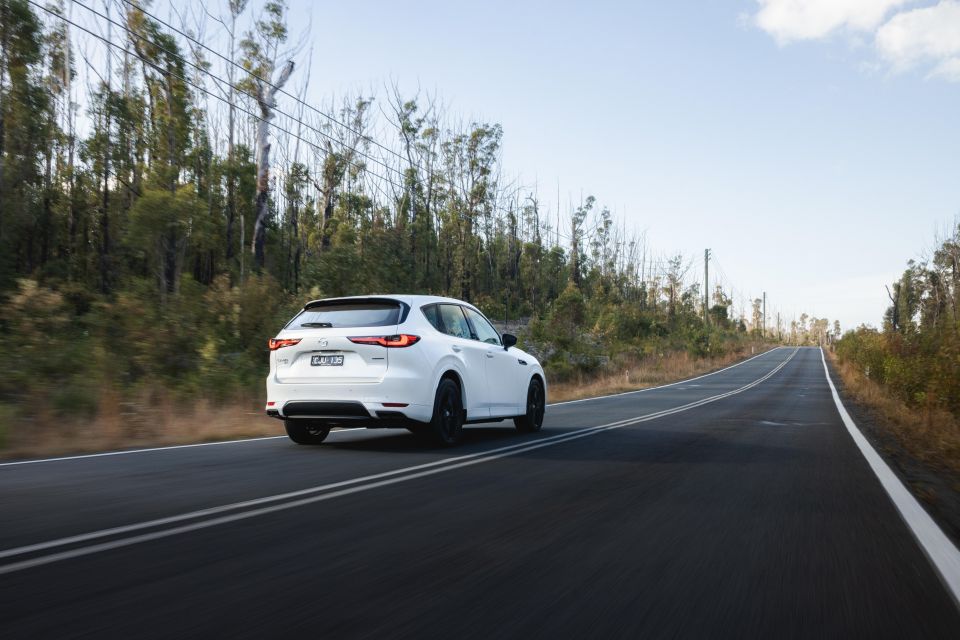
Click the images for the full gallery
MORE: Everything Mazda CX-60
Where expert car reviews meet expert car buying – CarExpert gives you trusted advice, personalised service and real savings on your next new car.
James Wong is an automotive journalist and former PR consultant, recognised among Australia’s most prolific motoring writers.


Josh Nevett
2 Days Ago


Josh Nevett
4 Days Ago
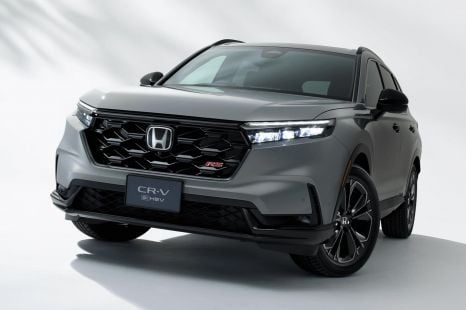

James Wong
6 Days Ago


Derek Fung
6 Days Ago


CarExpert.com.au
8 Days Ago
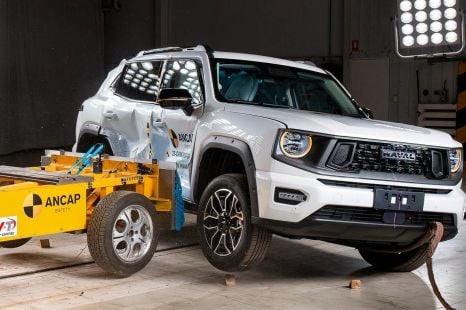

James Wong
9 Days Ago